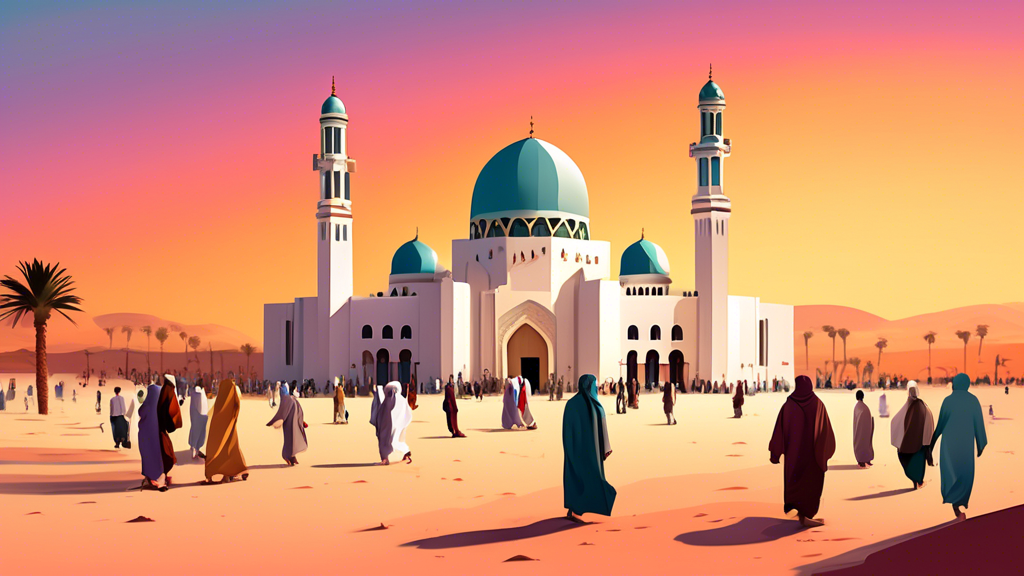Introduction to Masjid Quba
Masjid Quba holds a distinguished place in Islamic history as the first mosque ever built. Located in the outskirts of Madinah, Saudi Arabia, it was originally established by the Prophet Muhammad (peace be upon him) himself in 622 CE, upon his arrival in Madinah during the Hijra (migration from Mecca). This mosque not only serves as a place of worship but also symbolizes the profound beginnings of the Islamic community and its foundational teachings.
Historical Context and Construction of Masjid Quba
The history of Masjid Quba is intertwined with the significant events of early Islam. When the Prophet Muhammad (peace be upon him) migrated from Mecca to Madinah, he stopped at the site of Quba, then a village, and initiated the construction of a mosque. It is said that he himself participated in the building process, laying down stones with his own hands. This act of building the mosque marked a significant transition for the Muslim community from persecution in Mecca to establishment and community building in Madinah.
Originally, the mosque was a simple structure made of palm trunks and mud walls. Over the centuries, it has been renovated and expanded multiple times. The most significant renovations were made during the Ottoman Empire and later by the Saudi government, transforming it into the large and beautiful structure it is today, with its multiple domes and minarets.
Religious Significance of Masjid Quba
Ritual Importance
Masjid Quba is not just historically significant; it also holds great spiritual value in Islam. According to several Hadiths (sayings and actions of the Prophet Muhammad), praying two Rak’ahs (units of Islamic prayer) in Masjid Quba is equivalent to performing an ‘Umrah (minor pilgrimage). Thus, it attracts Muslims from all over the world who come to pray and seek blessings.
Symbol of Islamic Unity and Brotherhood
The mosque stands as a powerful symbol of the unity and brotherhood that Islam promotes. It was the first collective endeavor of the Prophet Muhammad and the Muhajirun (emigrants from Mecca) along with the Ansar (helpers from Madinah). This collaborative effort laid the foundation for what would become a closely knit Muslim community in Madinah, united under the principles of Islam.
Architectural Features of Masjid Quba
The architectural development of Masjid Quba reflects a blend of traditional Islamic architecture and modern influences. The current structure includes several domes covered with white tiles and minarets that reach towards the sky. Inside, the mosque features intricate Arabic calligraphy and beautiful geometric patterns that are characteristic of Islamic design. The mosque has been expanded to accommodate more worshippers, with vast prayer halls and improved facilities, while still preserving the sanctity and simplicity endorsed by its origins.
The Role of Masjid Quba in Modern Times
Today, Masjid Quba is not only a historical site but also an active mosque that hosts daily prayers and special religious gatherings, especially during the month of Ramadan. It remains a focal point of religious activities and a destination for pilgrims performing the Hajj who often visit the mosque as part of their pilgrimage rituals.
Conclusion
Masjid Quba is more than just the first mosque in Islam; it is a testament to the humble beginnings of a faith that now spans across the globe. It reminds Muslims of the importance of simplicity, unity, and the significant role that the early Muslims played in laying down the foundations of a faith that emphasizes community and brotherhood. As such, Masjid Quba continues to be revered as a symbol of Islamic heritage and spirituality. Its historical and religious significance makes it a beacon for Muslims around the world, encouraging them to reflect on the roots of their faith and the teachings of the Prophet Muhammad (peace be upon him).
